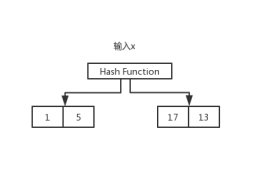硬件:windows7+8G内存+i3-4170处理器+4核CPU
首先贴上数据库的操作类BaseDao:
|
1
2
3
4
5
6
7
8
9
10
11
12
13
14
15
16
17
18
19
20
21
22
23
24
25
26
27
28
29
30
31
32
33
34
35
36
37
38
39
40
41
42
43
44
45
46
47
48
49
50
51
52
53
54
55
56
57
58
59
60
61
62
63
64
65
66
67
68
69
70
71
72
73
74
75
76
77
78
79
80
81
82
83
84
85
86
87
88
89
90
91
92
93
94
95
96
97
98
99
100
101
102
103
104
105
106
107
108
109
110
111
112
113
114
115
116
117
118
119
120
121
122
123
|
import java.sql.Connection;import java.sql.DriverManager;import java.sql.PreparedStatement;import java.sql.ResultSet;import java.sql.SQLException;import java.util.List; import com.lk.entity.TUser; public class BaseDao { private static ConfigManager cm = ConfigManager.getInstance(); private static String Driver = null; private static String URL = null; private static String USER = null; private static String PWD = null; private static Connection conn = null; private static PreparedStatement psmt = null; public ResultSet rs = null; public int row = 0; static { Driver = cm.getString("DRIVER"); URL = cm.getString("URL"); USER = cm.getString("USER"); PWD = cm.getString("PWD"); try { Class.forName(Driver); } catch (ClassNotFoundException e) { e.printStackTrace(); } getConnection(); try { conn.setAutoCommit(false); psmt = conn.prepareStatement(""); } catch (SQLException e) { e.printStackTrace(); } } private static Connection getConnection() { try { conn = DriverManager.getConnection(URL, USER, PWD); } catch (SQLException e) { e.printStackTrace(); } return conn; } /** * 多条记录插入操作 * flag是为了判断是否是插入的最后一个记录 */ public boolean affectRowMore(String sql, List<TUser> list, long flag) { try { psmt = conn.prepareStatement(sql); for (TUser tUser : list) { psmt.setLong(1, tUser.getId()); psmt.setString(2, tUser.getName()); psmt.setInt(3, tUser.getSex()); psmt.setString(4, tUser.getPhone()); psmt.setString(5, tUser.getPassword()); // 添加执行sql psmt.addBatch(); } // 执行操作 int[] counts = psmt.executeBatch(); // 执行Batch中的全部语句 conn.commit(); // 提交到数据库 for (int i : counts) { if (i == 0) { conn.rollback(); } } closeAll(flag); } catch (SQLException e) { e.printStackTrace(); return false; } return true; } /** * 多条记录插入操作 */ public boolean affectRowMore1(String sql, long flag) { try { psmt.addBatch(sql); // 执行操作 int[] counts = psmt.executeBatch(); // 执行Batch中的全部语句 conn.commit(); // 提交到数据库 for (int i : counts) { if (i == 0) { conn.rollback(); return false; } } closeAll(flag); } catch (SQLException e) { e.printStackTrace(); return false; } return true; } public void closeAll(long flag) { try { if (conn != null && flag == -1) { // 在完成批量操作后恢复默认的自动提交方式,提高程序的可扩展性 conn.setAutoCommit(true); conn.close(); } if (psmt != null && flag == -1) { psmt.close(); } if (rs != null) { rs.close(); } } catch (SQLException e) { e.printStackTrace(); } }} |
方法一:
通过BaseDao中的affectRowMore方法进行插入,插入的速度如下所示:
* 一万条数据(通过多条添加)
* 生成1万条数据共花费978毫秒
* 生成10万条数据共花费5826毫秒
* 生成100万条数据共花费54929毫秒
* 生成1000万条数据共花费548640毫秒
* 生成1亿条数据(因为数字过大,没有计算)
|
1
2
3
4
5
6
7
8
9
10
11
12
13
14
15
16
17
18
19
20
21
22
23
24
25
26
27
28
29
30
31
32
33
34
35
36
37
38
39
|
public void insertBenchMark() { long start = System.currentTimeMillis(); List<TUser> list = new ArrayList<>(); long row = 1; for (int j = 0; j < 1000; j++) { for (int i = 0; i < 10000; i++) { String uuid = UUID.randomUUID().toString(); String name = uuid.substring(0, 4); int sex = -1; if(Math.random() < 0.51) { sex = 1; }else { sex = 0; } String phone = (String) RandomValue.getAddress().get("tel"); list.add(new TUser(row,name, sex, phone, uuid)); row++; } int flag = 1; if(j==999) { flag = -1; } //封装好的 boolean b = userDao.insertMore(list,flag); if(!b) { System.out.println("出错了----"); System.exit(0); }else { list.clear(); } } long end = System.currentTimeMillis(); System.out.println("生成1000万条数据共花费"+(end-start)+"毫秒"); }public boolean insertMore(List<TUser> list,long flag) { String sql = "insert into tuser(id,name,sex,phone,password) values(?,?,?,?,?)"; return affectRowMore(sql,list,flag); } |
方法二:
通过BaseDao中的affectRowMore1方法进行数据的插入操作,插入的速度如下:
* 通过拼接语句实现多条添加
* 生成1万条数据共花费225毫秒
* 生成10万条数据共花费1586毫秒
* 生成100万条数据共花费14017毫秒
* 生成1000万条数据共花费152127毫秒
* 生成1亿条数据(因为数字过大,没有计算)
|
1
2
3
4
5
6
7
8
9
10
11
12
13
14
15
16
17
18
19
20
21
22
23
24
25
26
27
28
29
30
31
32
33
34
35
|
public void insertBenchMark1() { long start = System.currentTimeMillis(); StringBuffer suffix = new StringBuffer(); long row = 1; for (int j = 0; j < 1000; j++) { for (int i = 0; i < 10000; i++) { String uuid = UUID.randomUUID().toString(); String name = uuid.substring(0, 4); int sex = -1; if(Math.random() < 0.51) { sex = 1; }else { sex = 0; } String phone = (String) RandomValue.getAddress().get("tel"); suffix.append("(" + row + ",'" + name + "'," + sex + ",'" + phone + "','" + uuid + "'),"); row++; } boolean b = userDao.insertMore1(suffix.substring(0, suffix.length()-1),j); if(!b) { System.out.println("出错了----"); System.exit(0); }else { // 清空上一次添加的数据 suffix = new StringBuffer(); } } long end = System.currentTimeMillis(); System.out.println("生成1000万条数据共花费"+(end-start)+"毫秒"); }public boolean insertMore1(String sql_suffix,long flag) { String sql_prefix = "insert into tuser(id,name,sex,phone,password) values "; return affectRowMore1(sql_prefix + sql_suffix,flag); } |
总结:
方法一和方法二很类同,唯一不同的是方法一采用的是“insert into tb (...) values (...);insert into tb (...) values (...);...”的方式执行插入操作,方法二则是“insert into tb (...) values(...),(...)...;”的方式。
通过测试的对比,方法二比方法一快了近5倍。
到此这篇关于mysql中批量插入数据(1万、10万、100万、1000万、1亿级别)的文章就介绍到这了,更多相关mysql 批量插入数据内容请搜索服务器之家以前的文章或继续浏览下面的相关文章希望大家以后多多支持服务器之家!
原文链接:https://blog.csdn.net/qq_41204714/article/details/85634371













